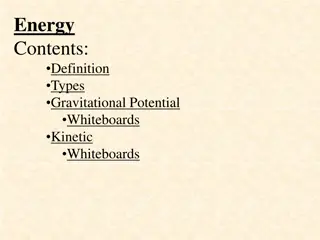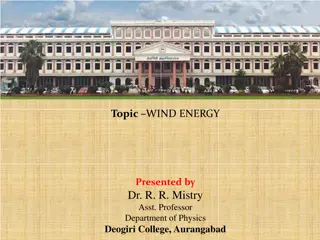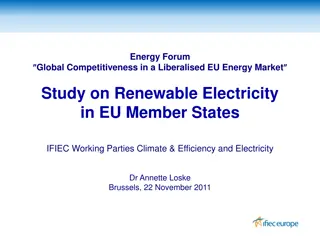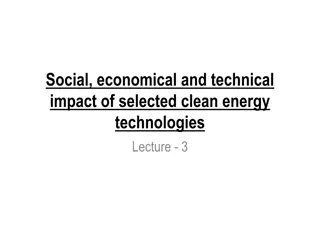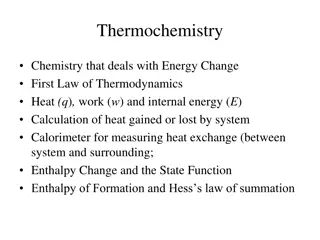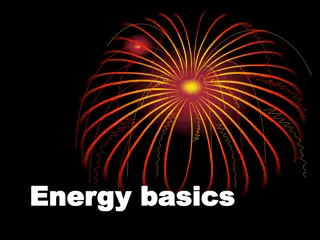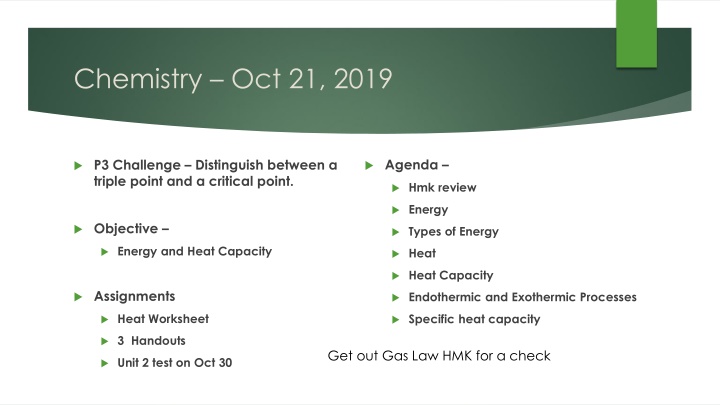
Energy and Heat Transfer in Chemistry
Discover the differences between a triple point and a critical point, explore various types of energy, learn about heat capacity and endothermic/exothermic processes, and delve into the concepts of kinetic and potential energy in the realm of chemistry.
Download Presentation

Please find below an Image/Link to download the presentation.
The content on the website is provided AS IS for your information and personal use only. It may not be sold, licensed, or shared on other websites without obtaining consent from the author. If you encounter any issues during the download, it is possible that the publisher has removed the file from their server.
You are allowed to download the files provided on this website for personal or commercial use, subject to the condition that they are used lawfully. All files are the property of their respective owners.
The content on the website is provided AS IS for your information and personal use only. It may not be sold, licensed, or shared on other websites without obtaining consent from the author.
E N D
Presentation Transcript
Chemistry Oct 21, 2019 Agenda P3 Challenge Distinguish between a triple point and a critical point. Hmk review Energy Objective Types of Energy Energy and Heat Capacity Heat Heat Capacity Assignments Endothermic and Exothermic Processes Heat Worksheet Specific heat capacity 3 Handouts Get out Gas Law HMK for a check Unit 2 test on Oct 30
What is Energy? Energy = Ability to do work Law of Conservation of Energy: Energy is neither created nor destroyed. It can only be transformed from one form to another or transferred from one system to another. Total energy of a system = Kinetic Energy + Potential Energy Kinetic energy Energy of motion Potential energy Stored energy
Kinetic Energy Types Thermal energy Energy of random motion of atoms Electromagnetic energy Energy of light Sound energy Energy of motion of atoms due to pressure differences Electrical energy Energy of the flow of electrons
Potential Energy Types Gravitational potential energy Energy of position within Earth s gravity Electrical potential energy Energy of separation of electric charge (voltage) Chemical potential energy Energy contained within chemical bonds Nuclear potential energy Energy contained within the nucleus
Heat Heat is the transfer of thermal energy either to or from a system. Heat is given the symbol, Q. Positive heat transfers heat to a system. (Endothermic process) Temperature of substance increases Negative heat releases heat to the surroundings. (Exothermic process) Temperature of substance decreases Each substance absorbs/releases at a characteristic rate called it s heat capacity. A substance with a high heat capacity requires a large amount of energy to change its temperature.
Endothermic process (Create a chart) An endothermic process is one that absorbs heat. You must heat an endothermic process to make it occur. Energy is a reactant. Q, heat is positive The system gets hotter. Surroundings gets colder. T = Tfinal Tinitialis positive Tf > Ti Energy Initial state E Final state
Exothermic process An exothermic process is one that releases heat. An explosion is an exothermic process (easy way to remember) Energy is a product. Q, heat is negative The system gets colder. Surroundings gets hotter. T = Tfinal Tinitialis negative Tf < Ti Energy Initial state E Final state
Substance c in J/g K c in cal/g C Specific heat capacity, c Aluminum 0.900 0.215 Bismuth 0.123 0.0294 Copper 0.386 0.0923 Brass 0.380 0.092 Gold 0.126 0.0301 If the heat capacity is per gram of material, it is the specific heat capacity, c. Specific heat capacity is the amount of energy needed to raise the temperature of 1 gram of substance by 1 degree Celsius. Typical units are cal/g C or J/gK. Iron 0.460 0.101 Lead 0.128 0.0305 Silver 0.233 0.0558 Tungsten 0.134 0.0321 Zinc 0.387 0.0925 Mercury 0.140 0.033 C and K are interchangeable for these units. Problems may use either Joules or calories. Given a choice, use Joules form. Note water s extremely high value 1 Food Calorie = 1 kcal (note the capital C) Alcohol(ethyl) 2.4 0.58 Water 4.186 1.00 Ice (-10 C) 2.05 0.49 Granite .790 0.19 Glass .84 0.20
Measuring heat, q For any change in temperature from Tinitial to Tfinal, T = Tfinal Tinitial T = T T f i For a temperature increase, T is positive. For a temperature decrease, T is negative. Heat exchanged during the temperature change is given by: q = mc T Where q is the heat, m is the mass of the substance, c is the specific heat capacity of the substance and T is the temperature change.
Heat calculations Ex: How much heat is needed to raise 2.50 g of water from 25 C to body temperature of 37 C? q = m = c = T = What mass of aluminum can be heated from 5 C to 45 C by using 275 J of heat? (Specific heat capacity of Al = 0.900 J/g C)? What is the final temperature when 36.4 J of of heat is lost from a 23.8 g piece of lead initially at 85 C? (Specific heat capacity of Pb = 0.128 J/g C)?
Heating Curve of Water Heat and temperature are not the same. Phase changes occur at a constant temperature, but still require heat to happen. Not all phase changes require the same amount of heat It takes more energy to boil than to melt. It takes more heat to warm water than ice or steam the same amount. The slopes of the ice and steam lines are greater than the line for water.
Exit Slip - Homework Exit Slip: How much heat is needed to warm a 450 g copper pan from 25 C to 150 C ? (Use joules) What s Due? (Pending assignments to complete.) Heat Worksheet What s Next? (How to prepare for the next day) Start reviewing for Test 2 Oct 30




